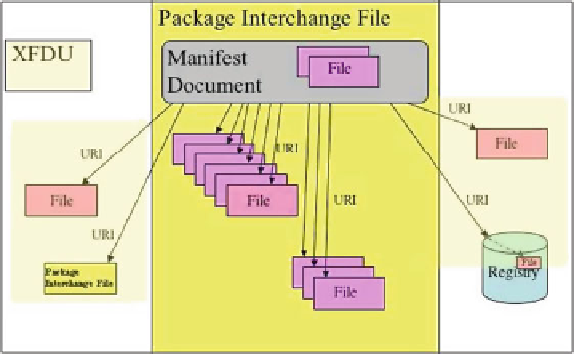Information Technology Reference
In-Depth Information
11.3 XFDU
Much of the packaging described in Part II uses the XFDU and, although this is not
the only possible packaging technique, so it is convenient to provide a little more
detail here.
XFDU has been standardized and well-documented by CCSDS with the idea of
supporting OAIS terminology from its conception. One key feature is the flexibility
it allows in terms of which things are pointed to and which are physically inside the
XFDU encoding.
It has been used in an operational environment by The European Space Agency
(ESA) in the form of the Standard Archive Format for Europe (SAFE) [
147
], a
packaging format fully-compatible with XFDU. Developing XFDU solutions can
be facilitated through existing open-source Java toolkits and APIs, which have
been created by ESA and NASA, allowing the construction, editing and analysis
of standardized XFDU Information Packages.
The Manifest document shown in Fig.
11.2
contains the information about the
relationships between the information that is packaged together. XFDU uses an
XML schema to describe this manifest file which is split into five sections. The
packageHeader
documents information about the package itself, its versioning,
its position in a sequence or volume, and PDI about it existence.
The
dataObjectSection
and
metadataSection
are used to relate the digital
information to be preserved to its RepInfo or PDI, respectively. Both data objects
and “metadata” objects can be either connected by reference or encoded within the
manifest itself (Fig.
11.3
). Each object is assigned an XML identifier, which is used
to link objects between the two sections. Objects in both sections can be given built-
in classifications or associated with user-defined classification schemes.
Fig. 11.2
Conceptual view of an XFDU

